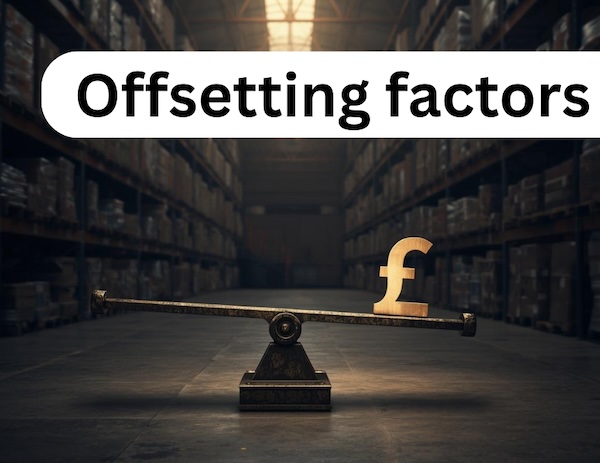
Stock Market Sell-Off: 3 No-Brainer Growth Stocks to Buy Right Now
Get ahead of the next rally in growth stocks by buying these three before they zoom higher again.
Rising economic uncertainty and rising interest rates are a bad recipe for growth stocks.
Growth investors have been hit hard amid the current stock market sell off fueled by U.S. trade policies and the subsequent reaction from other countries. Many companies face meaningful headwinds from the fallout of ongoing turmoil. However, long-term investors know that finding strong businesses amid market duress is a great way to build wealth.
These three stocks stand out as no-brainer opportunities for investors right now.
Image source: Getty Images.
1. Coupang
Coupang (CPNG 0.84%) has taken the Amazon playbook and applied it to South Korea. Its ultra-fast shipping, supported by more than 100 fulfillment centers throughout the country, ensures over 99% of Coupang orders arrive within 24 hours of purchase.
That fulfillment network attracts customers to its Wow membership, which offers free shipping with no minimum orders as well as food delivery (think Uber Eats) and Coupang’s video streaming service. In turn, the growing Wow membership attracts third-party merchants and restaurants to Coupang’s platform, driving high-margin revenue growth for its marketplace business.
Coupang has several growth drivers. It expanded into Taiwan in 2022 and has seen strong momentum. It recently launched its Wow membership in that market and it expects to reach breakeven faster than it did in South Korea. It also acquired Farfetch last year, helping it expand into luxury fashion. The company also could expand into digital advertising, which has proven a high-margin growth driver for other e-commerce companies, most notably Amazon.
Overall, management expects steady revenue growth while expanding its EBITDA margin. Its long-term goal is greater than 10% margin, up from 4.5% in 2024. It sees room to improve its supply chain efficiency, gaining operating leverage, while scaling its business in Taiwan and its Eats delivery service. That should produce strong earnings growth for investors.
With the stock trading for an enterprise value to forward EBITDA ratio of less than 23, it’s priced well below its historical average. With room for substantial earnings growth over the long run, patient investors should snap up shares here.
2. The Trade Desk
When marketers want to run a digital advertising campaign they might look to Facebook or Google, but those companies have a notable shortcoming. They present just a single channel for their ads. For marketers that want to run a broad campaign that will prioritize their ad performance across multiple channels like streaming video, podcasts, or publisher’s websites, The Trade Desk (TTD 1.33%) offers a best-in-class solution.
The Trade Desk’s platform uses machine learning algorithms to optimize advertising campaigns for its customers. It combined data from the advertisers themselves with third-party audience data it’s able to collect, and analyzes its own historical data to feed its algorithm. That data advantage cannot be overlooked and presents a great competitive advantage for The Trade Desk. As a result, the company can charge a premium to advertisers since it’s able to help them get more out of their budgets.
Management reported very disappointing earnings results in February, which led to a significant sell-off in the stock. That sell-off was exacerbated by the introduction of tariffs, which could act as a headwind to the advertising market this year. CFO Laura Schenkein pointed out the shortfall in its fourth quarter earnings wasn’t due to competitive pressure or a lack of opportunities. It was a failure to execute. Going forward, the company plans to grow by leaning into opportunities and increasing operating expenses.
That could weigh on The Trade Desk’s earnings in the short-run, but over the long run it has plenty of room for operating margin expansion. It’s a software business, with relatively low fixed costs. Its gross margin is in the 80%-range, which should allow the company to become increasingly profitable as it scales.
Despite the sell-off, The Trade Desk’s stock is still trading at a premium valuation. Investors can buy shares for an enterprise value to expected sales multiple of 8.6. But that’s arguably a price that’s more than fair for a company that should be able to grow its market share of a fast-growing market while expanding its profit margins substantially over the long run.
3. Datadog
As enterprises add more software to their operations they find they have a lot of data spread across disparate silos, making it difficult to pin down where exactly IT issues stem from. Datadog (DDOG 1.91%) takes in all of that data, indexes it, and presents it to customers in a unified dashboard making it easy to see what exactly’s going on in their systems.
The data observability market is growing quickly as enterprises look to add more services, migrate to cloud computing platforms, and look to collect as much data as possible for artificial intelligence (AI) services. That gives Datadog a long runway for growth, but the company has successfully implemented a land-and-expand approach to its business that’s provided an extra boost to its top line. The company expanded from observability to cloud security and cloud service management and added modules for improving software delivery and analyzing customer data.
That’s resulted in a net revenue retention rate in the high-110s. And, 50% of its customers now use four or more of its products, up from 42% two years ago. Another 12% use eight or more, up from 6% two years ago.
The company benefits from significant switching costs, which are only strengthened as it upsells customers to additional services. Switching observability providers will require significant overhead costs of reintegrating every data silo with a new provider with the risk of losing valuable data in the process. There’s the added cost of retraining users to a new provider.
Meanwhile, Datadog is making it easier for non-tech personnel to interact with data using its Bits AI chatbot, further cementing its position within enterprises.
The stock currently trades for an enterprise value about 10-times analysts’ expectations for revenue in 2025. That’s not the cheapest stock, but its growth potential remains strong. Analysts see sales climbing about 20% per year over the next few years. Meanwhile, it benefits from the high operating leverage of a software business, so earnings growth can be significantly higher over the long run.
John Mackey, former CEO of Whole Foods Market, an Amazon subsidiary, is a member of The Motley Fool’s board of directors. Adam Levy has positions in Amazon. The Motley Fool has positions in and recommends Amazon, Datadog, The Trade Desk, and Uber Technologies. The Motley Fool recommends Coupang. The Motley Fool has a disclosure policy.







